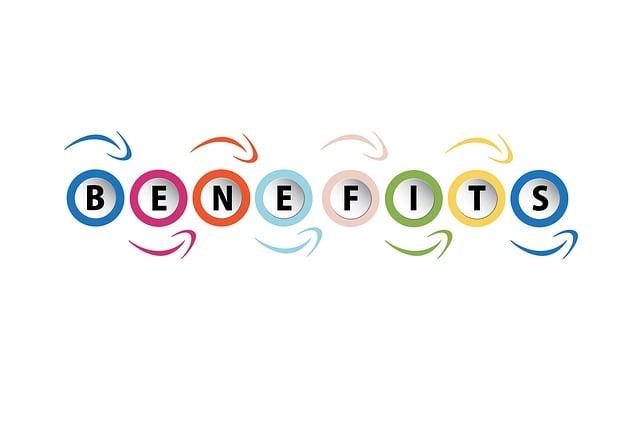- Introduction
- Importance of Plagiarism Checkers
- Top Free Online Plagiarism Checkers
- How to Use a Plagiarism Checker
- Advantages and Disadvantages of Online Plagiarism Checkers
- Conclusion
- FAQs
Introduction
In today’s digital world, the integrity of written content is paramount. Whether you're a student, professional writer, or educator, ensuring that your work is original and free from plagiarism is essential. In this comprehensive guide, we will explore the importance of plagiarism checkers, highlight the best free online tools available, dive into how to effectively use these tools, examine their pros and cons, and ultimately support you in maintaining originality in your writing.
We'll begin by discussing the significance of plagiarism checkers and how they contribute to the quality of written content. Then, we will provide a detailed list of the top free plagiarism checkers and guide you on using them effectively. Additionally, we'll cover the advantages and disadvantages of these online tools, helping you make informed decisions about content originality. So, let's get started!
Importance of Plagiarism Checkers

(Image: Pixabay/@OpenClipart-Vectors)
Plagiarism checkers are invaluable resources designed to identify any plagiarized content in your work. They support academic integrity and help maintain originality in various fields such as journalism, blogging, and research. The consequences of submitting plagiarized content can include losing credibility, damaging reputations, and facing legal repercussions. Using a plagiarism checker prevents these issues before they arise.
Moreover, these tools educate users on what constitutes plagiarism. By receiving feedback on improperly cited material or overly similar text from other sources, writers can learn how to paraphrase and attribute properly. As a result, plagiarism checkers not only safeguard against duplicative content but also improve overall writing skills.
In an age of information overload, where a vast amount of content is produced daily, standing out with original ideas is crucial. Plagiarism is often unintentionally committed, especially when writers are inspired by existing work. Hence, employing plagiarism checkers becomes essential to ensure that inspiration doesn’t morph into duplication.
Additionally, plagiarism checkers play a vital role in fostering trust within educational institutions and publishing houses. Students and authors alike can submit their work confidently, knowing that original content is being prioritized, thus encouraging a culture of respect for intellectual property.
Top Free Online Plagiarism Checkers

(Image: Pixabay/@distelAPPArath)
There are several free online plagiarism checkers that stand out in performance and reliability. Here are some of the best options currently available:
1. Grammarly: While primarily known as a grammar-checking tool, Grammarly also offers a free plagiarism detection feature. It compares your text against billions of web pages to identify similarities, ensuring your work is unique.
2. Quetext: Quetext is user-friendly and highly effective. Its DeepSearch technology scans a comprehensive database, providing precise results. The free version allows you to check up to 500 words at a time, making it useful for smaller tasks.
3. PlagScan: This tool offers a simple and straightforward interface, allowing users to upload documents or paste text directly. The free trial gives decent access, letting you understand its functionalities without any financial commitment.
4. Small SEO Tools: Small SEO Tools offers a variety of online services, including a plagiarism checker. It's easy to use, allows multiple types of text input, and provides percentage-based results indicating the originality of your text.
5. DupliChecker: Another great option, DupliChecker offers a free plagiarism check with no registration required. Users can upload small documents or copy and paste text. It's straightforward and quick, but keep in mind the limitations on word count for free checks.
How to Use a Plagiarism Checker

(Image: Pixabay/@geralt)
Using a plagiarism checker is a straightforward process, but following certain guidelines can maximize its effectiveness. Here’s a step-by-step approach:
Step 1: Choose Your Tool. Select one of the free plagiarism checkers mentioned above. Ensure it fits your needs regarding word count limitations and database strength.
Step 2: Prepare Your Document. Before uploading, review your document for any formatting issues and ensure clarity. This preparation allows the tool to analyze the content more accurately.
Step 3: Upload or Paste Your Text. Most plagiarism checkers allow you to either upload documents or paste text directly into their interface. Ensure that you've selected the correct option.
Step 4: Initiate the Check. Once your text is prepared, click the button to run the plagiarism check. This process may take a few moments, depending on the tool and the length of your text.
Step 5: Analyze the Results. Once the check is complete, scrutinize the results carefully. Look for flagged sections of your text and review suggestions for improvement to enhance originality.
Step 6: Revise Your Document. Based on the feedback from the plagiarism checker, make necessary revisions. This step is crucial to improving your content's originality and presentation.
Advantages and Disadvantages of Online Plagiarism Checkers

(Image: Pixabay/@geralt)
Understanding the pros and cons of using online plagiarism checkers can empower users to make informed decisions while selecting and utilizing these tools.
Advantages:
- Quick and Efficient: With just a few clicks, plagiarism checkers can identify content overlap, significantly reducing the time spent manually searching for potential plagiarism.
- User-Friendly: Most online plagiarism tools have intuitive interfaces, which makes them accessible for users of all technical backgrounds—saving time while effectively ensuring originality.
- Educational Benefits: Some tools also provide writing suggestions. These serve as learning aids for users to understand what constitutes plagiarism, offering tips on paraphrasing, citation, and referencing.
Disadvantages:
- Limited Functionality: While many free tools offer basic plagiarism detection, advanced features and comprehensive databases often lie behind paywalls, limiting free users’ access to deeper analysis.
- Accuracy Variations: Different plagiarism checkers have varying levels of accuracy. Users may find discrepancies between tools, potentially leading to conflicting results.
- Privacy Concerns: There’s always a risk associated with uploading sensitive documents to online platforms. Some users may worry about how their data and intellectual property might be handled or stored.
Conclusion
In a world where content is generated rapidly, plagiarism checkers serve as essential tools for maintaining the integrity of one’s work. They not only help identify problematic content but also enhance users’ writing skills by educating them on proper citation and originality practices.
The free online plagiarism checkers discussed in this guide offer excellent resources for students, educators, and professionals aiming to uphold high standards in their writing. Ultimately, choosing the right tool depends on your unique needs and the goals of your writing project. By remaining vigilant with originality, you can foster a culture of respect and trust in intellectual property.
FAQs
What is a plagiarism checker?
A plagiarism checker is a software tool that scans your text for instances of plagiarism by comparing it against a database of other written works to identify overlapping content.
Do free plagiarism checkers provide accurate results?
Free plagiarism checkers may not offer the same level of accuracy as paid ones due to limitations in their databases and functionalities. However, they can still be useful for basic checks.
Can plagiarism checkers check papers written in languages other than English?
Many plagiarism checkers are primarily focused on English content. However, some support multiple languages. Always check the specifications of the tool you're using.
How often should I use a plagiarism checker?
It’s wise to use a plagiarism checker every time you complete a piece of writing, especially if it’s for academic or professional purposes, to ensure your work remains original.
What happens if I get flagged for plagiarism?
If flagged for plagiarism, review the results provided by the checker. Make necessary revisions to your content by rephrasing sentences, adding citations, or altering structure to enhance originality.
